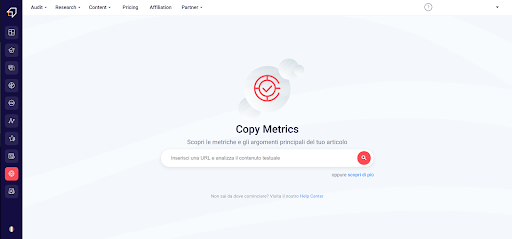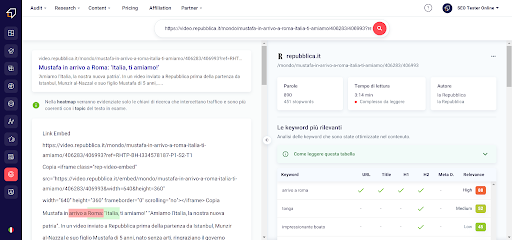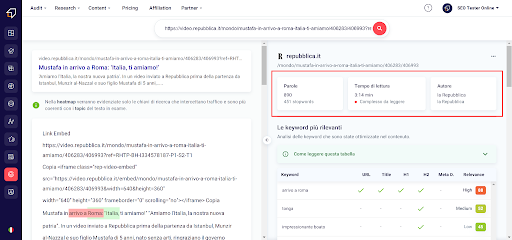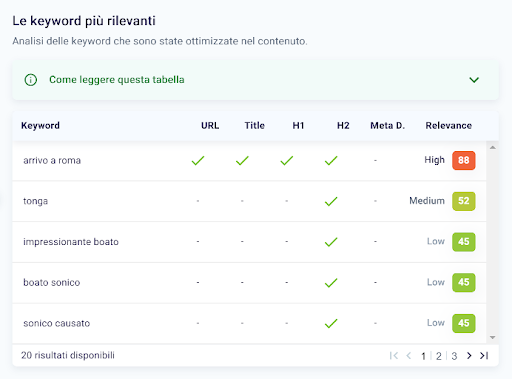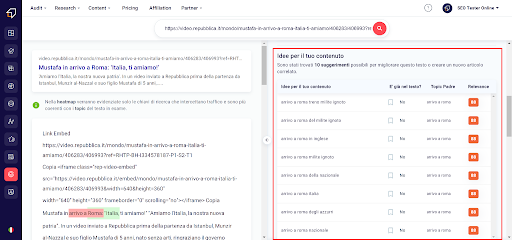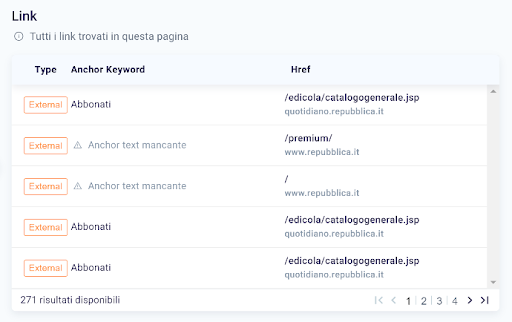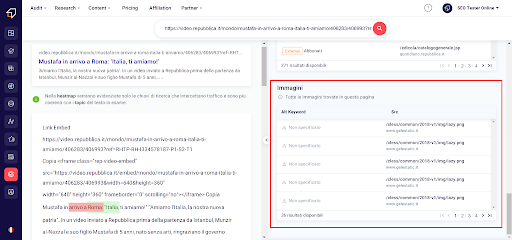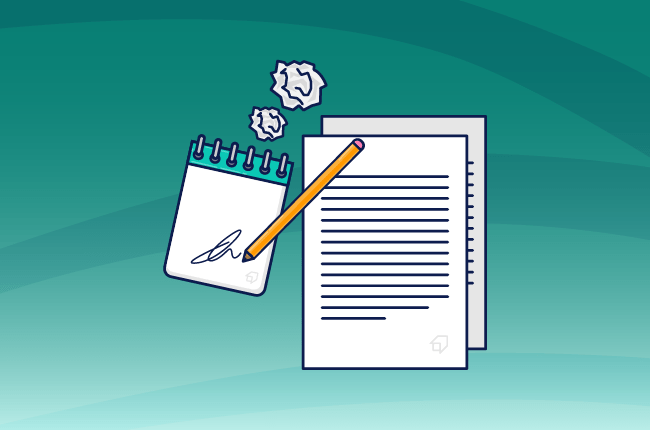Copy Metrics Guide
Copy Metrics is the tool that will allow you to analyze the SEO of any text within a web page. With this tool, in fact, you will be able to find out its level and for which keywords it has been optimized.
Furthermore, you will be able to analyze the articles of your competitors, identify their strengths and weaknesses, but above all create more performing content to overcome them in the SERP.
Let’s move from theory to practice.
How to enter the content to be analyzed?
In order to take advantage of the full potential of Copy Metrics, you will first need to log into your SEO Tester Online account, or create a new one.
After the Login phase, you will land on the Dashboard, which we analyze in detail in our Guide to the Dashboard.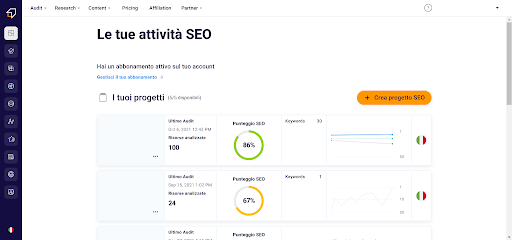
To access Copy Metrics, you will need to click on the tool icon in the side menu.
After that, you will need to enter the URL of the content you want to scan. So, paste a destination address (for example, the link to a competitor’s article) in the search bar.
Finally, click on the “Search” button.
After a few moments, a screen divided in half will appear: on the left side you can analyze the distribution of keywords within the text through a heat map, while on the right you will see the details of the analysis.
Let’s find out more closely!
Text metrics
The first information that the tool provides us concerns the metrics of the text, i.e. how many words make up the article, the time and ease of reading and information on the author / author.
Why are they relevant to SEO? We explain it below!
Number of words
Google tends to reward content that is complete and that provides its users with useful and relevant information.
This is why in many cases (although not always) writing an article with at least 400 words may be enough to cover a topic in a satisfactory way.
Time and ease of reading
Content must be not only useful, but also easy to read.
Therefore, we recommend that you deal with the topics in a comprehensive, non-dispersive and above all clear way.
Remember that users have neither the time nor the desire to read complex or boring content.
Author
Although authorship may not be a direct ranking factor, search engines consider the author of a content as an indicator of the quality of the content itself.
In fact, in the quality guidelines, it appears that the absence of information on the author or author of the content is considered as an indicator of low reliability.
Since Google, with the introduction of the concept of YMYL and EAT guidelines, places the emphasis on reliability, it does not look favorably on an anonymous pen for the site on which it is writing.
Most relevant keywords
Right below the text stats, you’ll find the keyword table. This provides you with all the most relevant keywords and sorts them by relevance.
It also shows the distribution of each keyword in the various relevant SEO elements such as url, title, headers and meta description.
Keyword ideas
The Ideas table for your content is a real treat for those looking to write comprehensive, more search engine-oriented articles.
In this list, in fact, the tool shows all the related keywords found for the content topic.
Furthermore, you can find out which keywords are used and which are not within the content of your competitors.
In the second column of each suggestion, in fact, you can check whether a keyword is already present or not in the analyzed text.
In fact, if there is a white bookmark with a “No”, then the author did not use it. Otherwise, you will find a green bookmark with a “Yes”.
Finally, to see how relevant that keyword is to the topic of the article, you can look at the Relevance column.
Titles and Subtitles
In the Titles and Subtitles table, you will have a list of the headings used in order of appearance. If the article is well written, the table will provide an overview of the topic structure and subtopics.
In addition, you will be able to see which key topics are used and which are the most relevant.
Links
Link building is one of the most important activities in off-site SEO.
Inserting links to other parts of the site and to other relevant and authoritative sites in your article increases the value of your content, which could be rewarded by better ranking search engines.
The Links table contains the complete list of internal and external links present within the text analyzed by Copy Metics.
This feature is functional when using Copy Metrics to spy on the competition. In fact, just look at the table to see how many and which relevant links you could add to your article.
Images
In SEO, images are fundamental, because they enrich the texts, make browsing more enjoyable and give the possibility, provided they are well optimized, to position their visual contents also on the Google Images search engine.
In the image table you can see in the blink of an eye which ones have alt text and which ones don’t.
If you don’t know what this is, luckily we’ve written a guide on how to optimize your images for SEO that you can check out.


